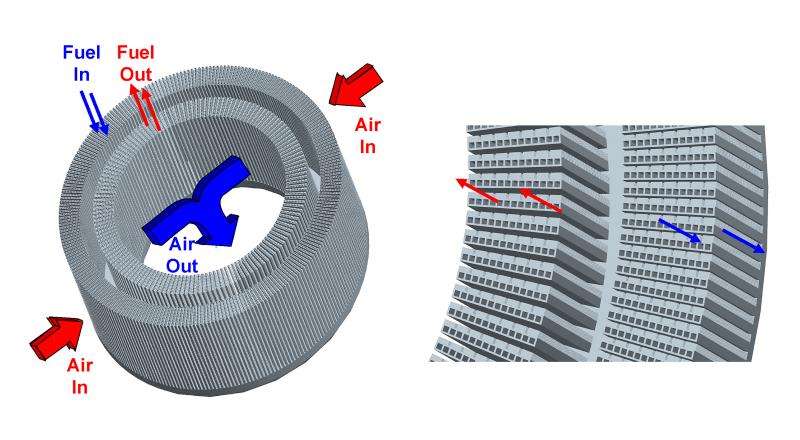New technology could help high-performance aircraft turbine engines stay cool, perform better

High-performance aircraft turbine engine manufacturers are facing unprecedented increases in the amount of heat that must be released in order to maintain acceptable temperatures in supersonic engines that is required for the aircraft to operate at optimum levels.
Issam Mudawar, professor in Purdue's School of Mechanical Engineering, has developed a device that could use aircraft fuel to cool hot engine components in order to alleviate the increasing temperatures.
Mudawar said hot engine components are generally cooled by air that is bled from the engine's compressor, but this type of system does not work for high-performance engines.
"Cooling an engine with air from the aircraft's compressor is not viable for high-performance engines since the compressor air at supersonic speeds is too hot itself," he said. "My technology uses the aircraft fuel to cool the compressor air before it is used to cool the hot engine components in the aircraft."
Mudawar said aircraft engine manufacturers could benefit greatly from the heat exchanger device.
"The technology consists of a heat exchanger that is composed of a multitude of modules in which the cold fuel is passed through internal mini-channels and the hot air is passed in cross-flow along the finned outer surface," he said. "It is very compact and light weight, possesses very high heat transfer performance and the modules can be configured in many possible ways to suit the engine's packaging requirements."
Mudawar hopes to attract funding from companies that have significant interest in both funding and implementing this technology.
"This technology could be especially useful to manufacturers who work with high-performance engines who need a device that minimizes weight and volume while increasing heat transfer," said Mudawar. "The U.S. Air Force and U.S. Navy, who work with some of the fastest airplane models, such as the high Mach supersonic aircraft, could greatly benefit from this technology."
Provided by Purdue University



















